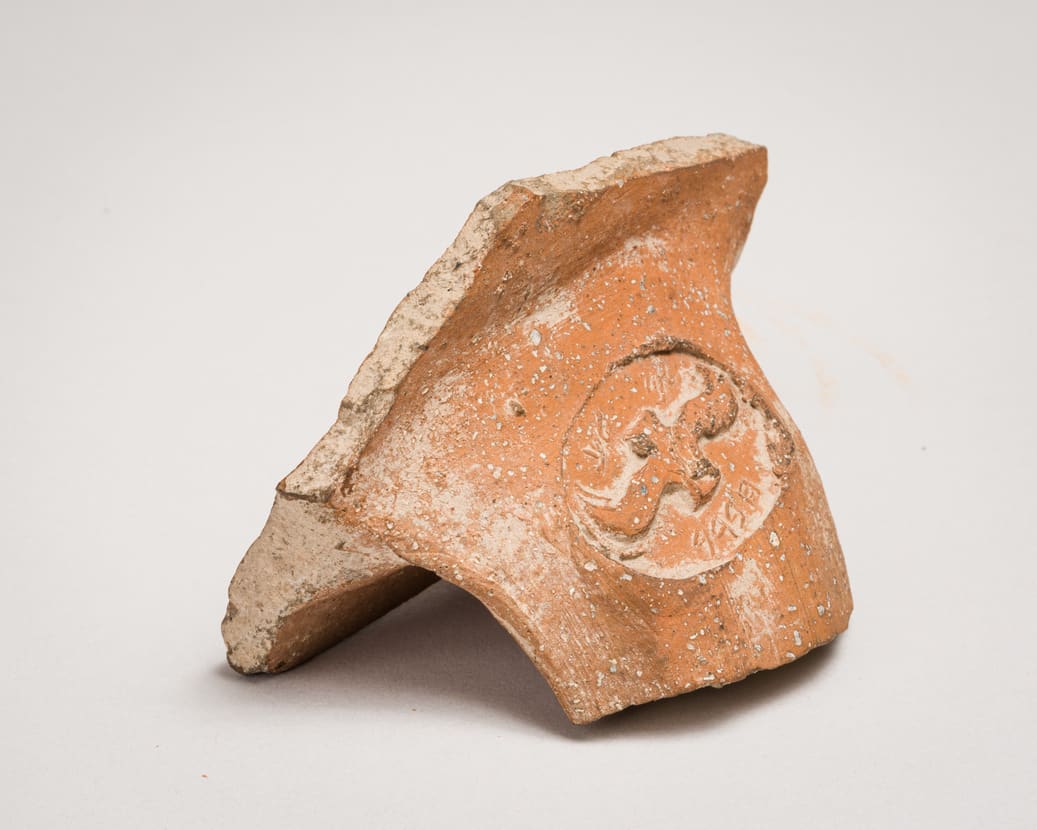
- Object Name:
- Stamped Jar Handle
- Place Made:
- Israel
- Date:
- late 8th century B.C.E.
- Medium:
- Clay: impressed and fired
- Dimensions:
- 2 1/4 × 3 1/4 × 2 1/16 in. (5.7 × 8.3 × 5.2 cm)
- Credit Line:
- Purchase: Archaeology Acquisition Fund
- Accession Number:
- JM 12-73.271
Not On View
For the past century, archaeologists at Iron Age sites in Israel have been discovering the handles of large storage jars that were stamped with seals before firing. The jars originally had two types of seal impressions on their handles. The first, called royal seals, bear the inscription in ancient Hebrew: "[Belonging] to the king," placed above either a four-winged scarab or a two-winged sundisc as seen in this example. Below the figure is inscribed one of four possible place names: Hebron (found here), Ziph, Socoh, or the unidentified Mmst. The second type of seal bears only an inscribed name and is thought to be that of a royal official.
The stamped storage jars, found in sites all over southern Israel and associated with the king and his officials, would seem to pertain in some way to governmental economic administration. They were most likely used to hold wine, oil or grain, possibly related to preparations by King Hezekiah against Assyrian attack in the late 8th century B.C.E.
The stamped storage jars, found in sites all over southern Israel and associated with the king and his officials, would seem to pertain in some way to governmental economic administration. They were most likely used to hold wine, oil or grain, possibly related to preparations by King Hezekiah against Assyrian attack in the late 8th century B.C.E.
Information may change as a result of ongoing research.